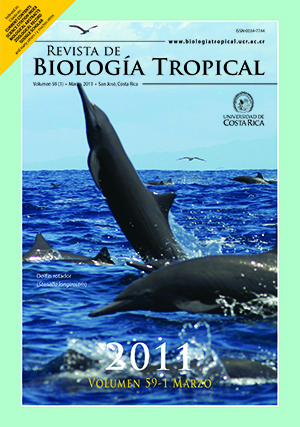Abstract
Diverse reproductive strategies shown by ferns and lycophytes allow them to colonize a variety of habitats, particularly after the incidence of natural or anthropogenic disturbances. This study assessed the presence, abundance and reproductive strategies of ferns growing in soils of temperate forests with different levels of disturbance at the Sierra Nevada mountain range in the State of Mexico. Vegetation, soil and environ-mental variables were recorded in 200m2 permanent plots located in four forest stands. One-Way ANOVA and Canonical Correspondence Analysis resulted in the recognition of three landscape types defined by the degree of environmental alteration: low, moderate and severe. Also, from five soil samples collected in each stand, germination of ferns and lycophytes was induced. A positive relationship was found between the alteration degree and Cheilanthes abundance. Under a low landscape alteration regime, species richness is restricted to Cheilanthes bonariensis, C. marginata and Pellaea ternifolia subsp. ternifolia. The soil is a reservoir of spores of Cheilanthes and Pellaea ternifolia subsp. ternifolia because their spores can remain viable for different time intervals. Apogamy is the usual reproductive strategy of Cheilanthes species in disturbed ecosystems, although these species also show sexual reproduction in natural ecosystems with adequate water availability. Apogamy may be related to a shorter generation time in comparison with a low disturbed ecosystem. On the other hand, Pellaea ternifolia subsp. ternifolia only has sexual reproduction. Apogamy might be related to a faster genera-tion in comparison with a low disturbed ecosystem.
##plugins.facebook.comentarios##

This work is licensed under a Creative Commons Attribution 4.0 International License.
Copyright (c) 2011 Revista de Biología Tropical






